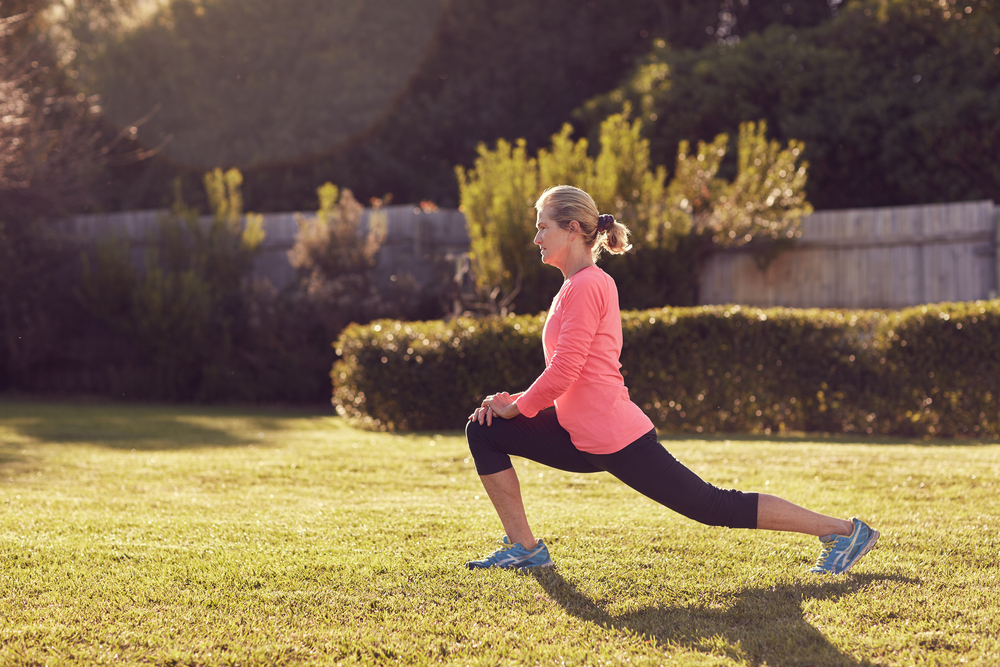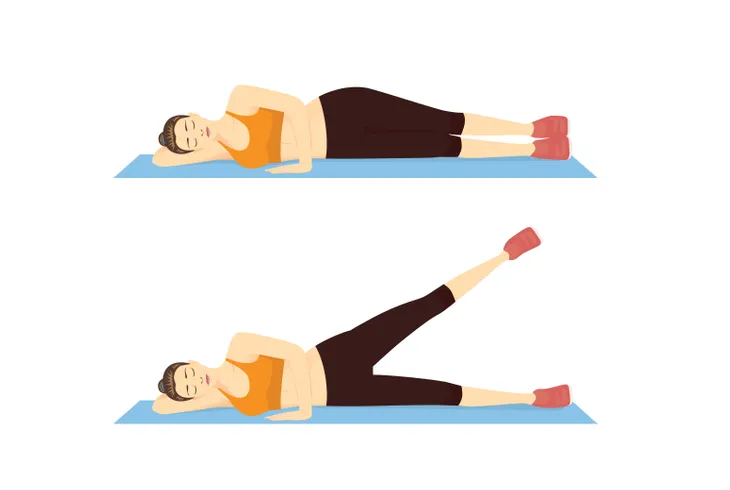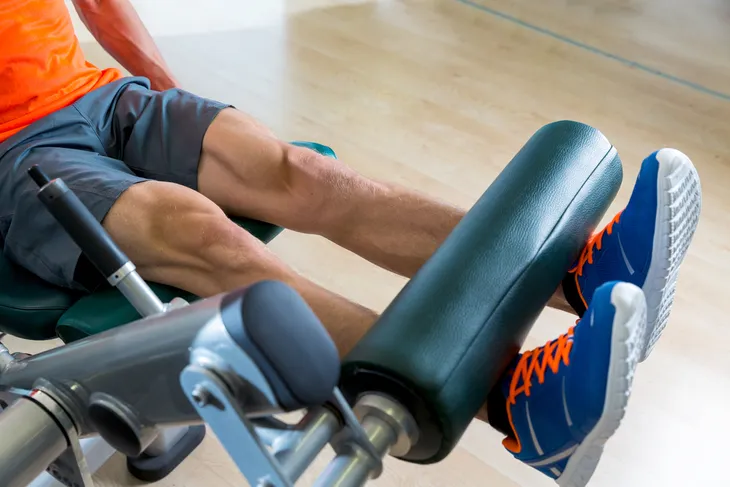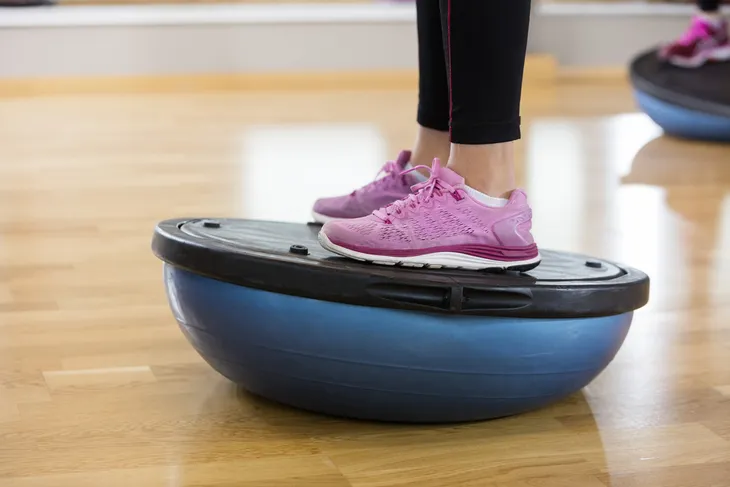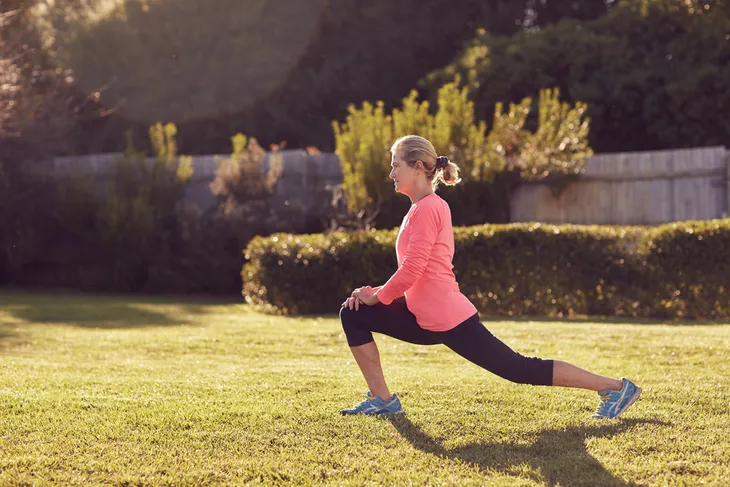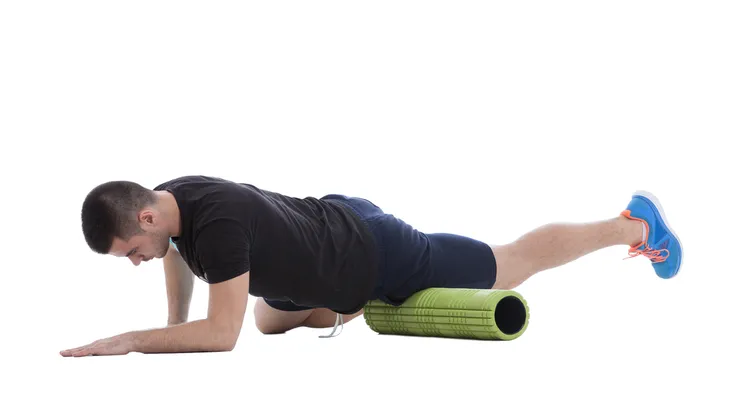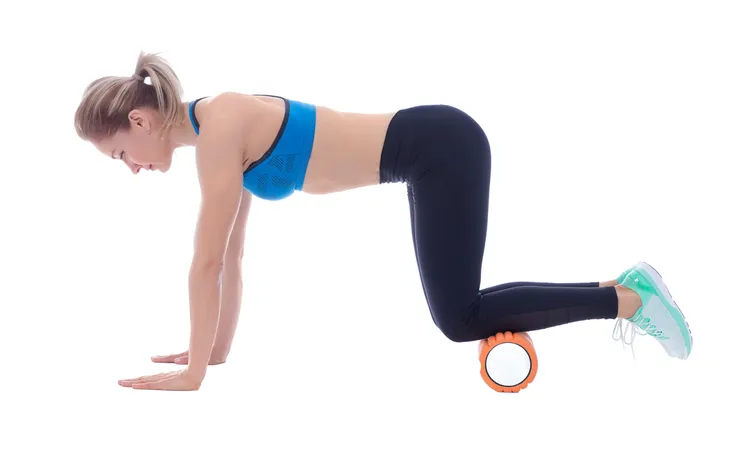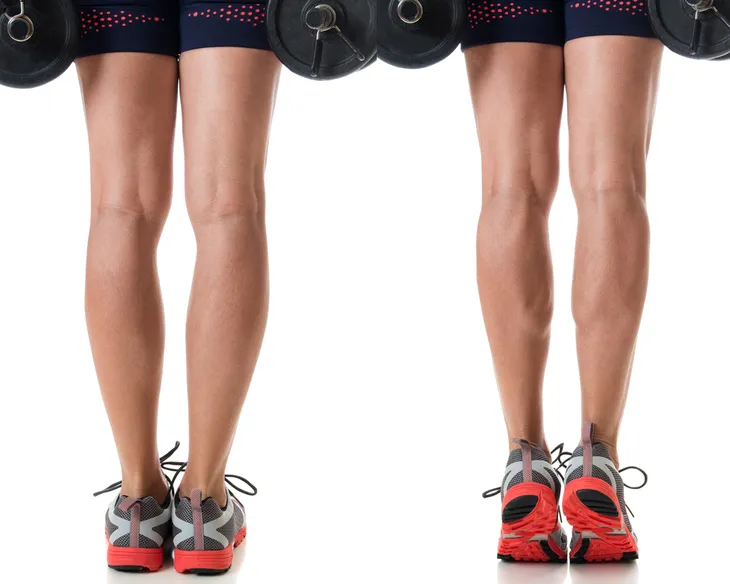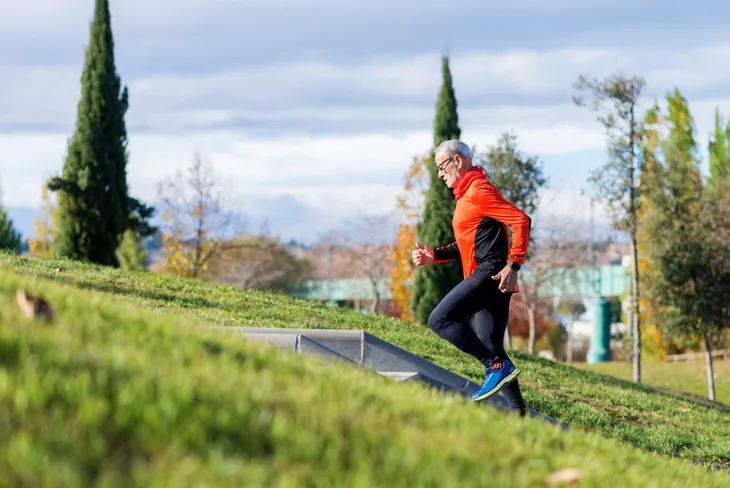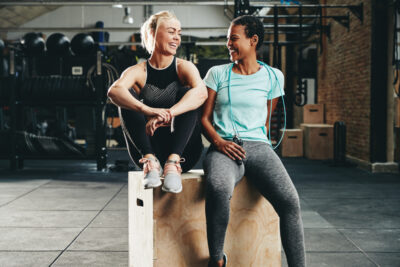Knee and joint pain are common ailments that affect not only the elderly but also many middle-age people and even those in their 20’s. Your knees are put under a lot of stress on a daily basis. For instance, if your joints are constantly aggravated, your bones begin wearing down, and you might not have the strength needed in the muscles around your knees and in other areas of your body to protect them from being injured or damaged.
It takes work to strengthen your knees, which is why so many people experience knee problems as they age. Whether you have general knee pain from exercising, a medical condition that affects the knees, or simply want to take preventative measures to ensure good knee health now and in the future, it’s easy to strengthen those knees with these 10 easy moves…
Inner Thigh Leg Lifts
Unfortunately, many exercises cause knee pain and can result in both short and long-term knee damage. Because of this, you have to be very careful when doing exercises to strengthen the knees prevent exacerbating pain in the knee joints. One safe and easy exercise to help your knees is inner thigh leg lifts. Lying on your side, either prop your head on your bent elbow or lay your head down on your arm, straightening it like your legs. With the top leg, lift it a few inches, hold for 5 seconds, then lower it. Repeat 10 times and switch to the other leg.
This exercise strengthens the target area—your inner thighs. When combined with other leg exercises, working these muscles will help strengthen your knees without putting pressure on your joints. You can increase the intensity and difficulty by adding ankle weights when you’ve reached the point where the exercise is too easy for your, or if you’re already very fit and strong in this muscle area. Start small and work your way up so you don’t strain your muscles.
Hip Raises
Your hips are an area that needs attention in order to strengthen your knees, and hip raises will effectively target your quadriceps, outer hips, as well as your glutes. Lying flat on your back with your knees bent comfortably and your feet flat on the floor, slowly raise your hips and extend your left leg so that it’s in-line with your hips. Hold for a couple seconds, then extend your left leg out to your left side for a couple seconds before returning to the previous position. Lower your leg back to the ground and repeat 10 times before doing the same with your right leg.
When your hips lack the necessary strength, running, walking, lifting weights, using bands, basically any form of exercise that can engage the hips and lower back can damage or increase current knee troubles. Without doing exercises that work your hips and the muscles around it can be problematic to many areas of your body. The correlation between your hip joints and knee joints is important, so add hip raises to your exercise routine.
Bent Leg Extensions
An easy move to strengthen your knees that only requires a chair is bent leg extensions. Sit on a chair, making sure you have good posture. Place your feet flat on the floor and lift your right leg, extending it straight in front of you without locking your knees (locking them can cause pain and injuries). Hold for a few seconds and slowly lower it back down to the starting position, doing 15-20 reps on each side. Several muscles around your knee are contracted while doing this move, strengthening them through slow, controlled movements.
There are variations of leg extensions that allow you to increase the difficulty as the muscles around your knee become stronger. Adding ankle weights is one way to do this. You can also use weighted machines at the gym. Or you can hold the position for longer, then lower the leg without allowing it to touch the ground until you’ve done all the reps. When moves are more tiresome and challenging, it’s easy to slip out of form. So if you decide to increase the difficulty, be careful you don’t lock your knees or twist your hips. You can end up straining a muscle or cause knee joint pain.
Core Balancing
Knee health isn’t just about strengthening the muscles around the knees; it’s also important to work on your core muscles. It’s interesting how other areas of the body need to be worked on when they’re not directly surrounding or attached to the muscle or joints you want to strengthen. Your knees are no exception to this. Doing core balance exercises is especially important and effective for runners. Runner’s knee and a variety of other painful ailments are common for people who run, so there’s even more reason to ensure areas like your core are worked.
Your core muscles make up your torso, pretty much everything but your arms, legs and neck. Without good core strength, your body can be prone to injury. An easy but effective way to build core strength is by doing balance exercises. If you have access to balance discs or a Bosu ball, start off by standing on it and balancing, focusing on using your core muscles. When you’re able to balance easily, implement moves to do while balancing, like squats, lifting one leg and holding, or holding and moving a medicine ball around.
Lunges
Lunges can be the perfect bodyweight exercise to strengthen your knees by targeting several muscles and joints: hips, glutes, hamstrings, quads, calves, abdomen, and back. Stand straight with your legs comfortably together, then step forward with your right leg and bend both your knees until your knees are at 90-degree angles. The thigh of your right leg should be parallel to the ground, with your knee over your ankle. The shin of your left leg should be parallel to the ground. Push off to the original position and repeat with your left leg, doing 10 reps on each leg.
For such a simple exercise, lunges pack quite the punch. While they put pressure on your knee joint, it’s much less strenuous than a leg lift machine. It allows you to strengthen the muscles without constant strain on the joint. But it all depends on your body—if you currently experience knee pain, lunges might not be the best option to help strengthen your knees. However, you might be able to work yourself up to lunges by doing other lighter exercises that strengthen the same muscles. Just be careful and mindful of how you feel.
Water Walking
Everyone enjoys and prefers certain types of exercise over others, and if you have knee or hip pain, it can be difficult to find ways to strengthen the knees without significant pain. There are many moves you can do in the water to help your knees, but water walking is one of the best. Standing in waist-high water (or at the most, chest high), walk around for 5 minutes. Water walking takes the pressure off of your knees while at the same time providing much greater resistance than walking outdoors.
This exercise is easy on your joints, but the added, gentle resistance works your muscles much harder. You’ll strengthen your knees quicker and it’s unlikely you’ll feel joint pain—if your muscles get sore or tired, work your way up. Research has shown people with osteoarthritis can really benefit from doing aquatic exercise, and there are tons of other moves you can do in the water to help with all types of joint pain. Most cities with recreation centers offer aquatic exercise classes, some of which are even tailored to people with arthritis or knee and hip injuries.
Quad Contractions
Many exercises like leg extensions using a machine with weights are very effective at strengthening the muscles on the front of your thighs, called your quadriceps. However, they often end up causing knee pain and injuries because of the pressure on your joints, so many experts don’t encourage doing them. But it’s still a good idea to strengthen your quadriceps to help with knee health, and you can do quad contractions are a good alternative. This exercise can be done anywhere, making it ideal for those who don’t go to a gym or have much equipment.
To do quad contractions, roll up a towel or use a foam roller. Lying on your back, place the towel or roller underneath your knees. Slowly contract and straighten one leg, making sure to use your quadriceps. Your lower leg should lift as high as possible without pain, all while keeping your knee on the roller. Keeping your quads contracted, hold for about 5-seconds then relax the leg. Repeat 10 times then switch to the other leg. Beginners to experts can do this easy but effective exercise without hurting the knee joint.
Shin Stretches
Shins are a difficult area to work on so they’re often ignored, yet they can greatly contribute to knee strength, health, and pain. If you avoid exercising and stretching this area, you might never get rid of knee pain and won’t benefit from taking care of it. A great way to target your shins is to use a foam roller. Foam rollers were first used by trainers, athletes, and physiotherapists, but their benefits have brought them into the mainstream. Now everyone from beginners to fitness gurus are using them.
The muscle in your shin runs alongside the bone when contracted, making it tricky to target but a foam roller can do it. Start on your hands and knees with the front of your shins (just above the ankles) resting on the foam roller. If needed, curl your feet forward to contract your shin muscles, then proceed to slowly roll the muscle along the roller until you reach your knee, then go back over the muscle down to the starting point. You’ll be surprised at how this feels, and the benefits of taking care of it can help strengthen and reduce pain in your knees.
Calf Raises
Another area that’s often not focused on to improve knee strength and health is your calf muscles. We use them all the time by simply walking, taking the stairs, and moving around doing day-to-day tasks. They get a decent workout if you walk a lot, and you’ve probably noticed that runners have enviable calf muscles. Although they’re used every day they aren’t always given attention during exercise routines, yet it’s really easy to target them. And when your calf muscles are finally focused on, you’ll feel and see a noticeable difference in your knees.
An easy move to get your calves in shape are calf raises. Standing straight with your feet hip width apart and your arms by your sides, slowly push up so your heels come off the ground and you’re balancing on the balls of your feet. Hold for 5-seconds then lower and repeat 20 times. To make it more challenging, stand on the bottom stair and when you come down, let your heels drop below the lip of the stair, hold, then push back up onto the balls of your feet.
Stair Climbing
Depending on your body, muscles, joints, and pain history, some exercises can seriously damage and increase pain in the knees. Running is often a cause of pain because it’s jarring and can cause inflammation. But if you enjoy intense cardiovascular workouts and want to avoid knee pain, give stair climbing a try. It’s much easier on your knees, but will still make you work hard. Stair climbers provide a good cardio workout and strengthen and tone a surprising amount of other muscles.
Stair climbers work your abdominal muscles, gluteus maximus (your hip extensor), hamstrings, and quadriceps. Strengthening your core muscles, on top of the major muscles in both your front and back thigh, will in turn help strengthen and lower the risk of injuries to your knees. Working on the thigh muscles that connect between your hips and knee joints will provide better stability and tone your legs, while making exercise and everyday activities easier on the body. Stair climbers or even just walking up and down stairs at home are much easier on the knees, but you should still pay attention to your body and don’t push it too hard.
